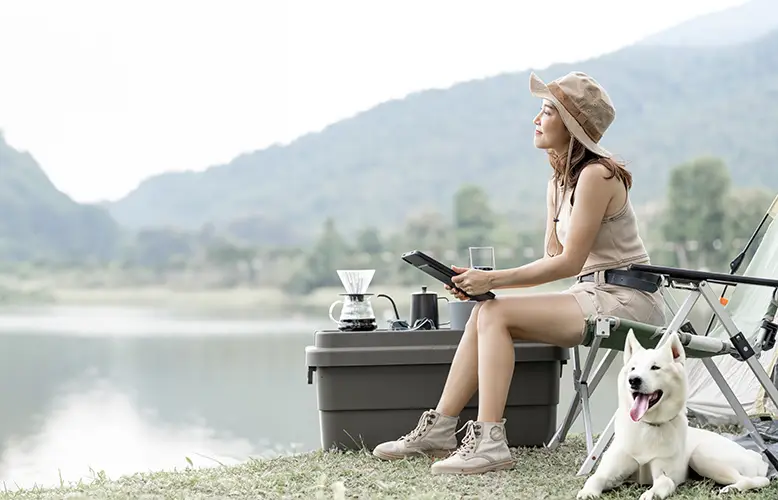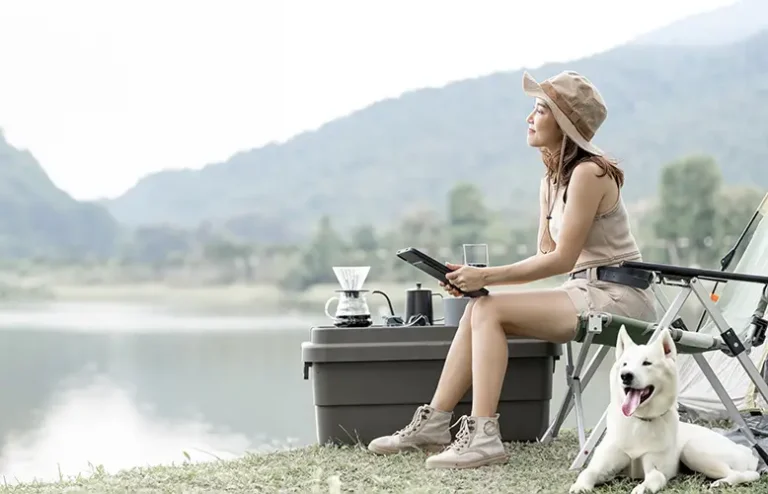
Camping trips aren't just for humans, they're exciting for our four-legged friends too. However, ensuring your pet's safety and comfort in the great outdoors requires careful planning and consideration. From wildlife encounters to extreme temperatures, there are a variety of hazards you need to be aware of if you're planning to go camping with your furry friend.
Teddy, founder of White House Glamping, offers eight important tips for keeping your pet safe and comfortable during your camping trip.
Research pet-friendly campgrounds
Teddy says, “Before you embark on your camping adventure, research pet-friendly campgrounds that welcome furry guests.” Pet waste disposal stations, designated pet areas, and dog-friendly nearby Look for establishments that offer hiking trails. ”
Pack pet-friendly equipment
Teddy recommends packing gear specifically designed for camping with pets. This includes a sturdy leash, a collapsible water bowl, pet-friendly insect repellent, and a comfortable waterproof harness or life jacket if you plan on participating in water activities.
Set up a safe sleeping area
Create a safe sleeping area for your pet by bringing a portable pet crate or tent. Make sure your sleeping area is well ventilated and protected from extreme temperatures. “Adding familiar bedding or a favorite blanket can provide comfort and security for your pet,” says Teddy.
Ensure proper nutrition and hydration
Just like humans, pets need clean water and nutritious food while camping. Bring plenty of fresh water, a portable food bowl for your pet, and regular or specially formulated camp meals. “Avoid feeding your pet unfamiliar foods or potentially harmful foods found in nature,” says Teddy.
Protect from wild animal encounters
Be aware of possible wildlife encounters and take precautions to protect your pets from harm. Keep pets on a leash and supervised, especially in areas with high wildlife activity. “Familiarize yourself with local wildlife and learn how to safely respond if you encounter one,” Teddy says.
Use a collar and leash
In remote campgrounds, it's important to properly identify your pet with a collar tag or a microchip with up-to-date contact information. Additionally, always keep your pet on a leash to prevent it from wandering around or getting lost in unfamiliar surroundings.
monitor the weather
Extreme temperatures can pose a significant risk to pets, especially in hot or cold environments. Teddy advises monitoring temperature conditions closely and taking appropriate measures to keep your pet cool or warm as needed. This may include providing shade, using cooling vests or mats, and bundling up in cold weather.
Practice Leave No Trace principles
Follow Leave No Trace principles to respect the natural environment and minimize your pet's impact on nature. Always clean up after your pet, dispose of waste properly, and avoid disturbing wildlife or sensitive habitats.
“As a pet owner and outdoor enthusiast, I believe it is essential to prioritize the safety and health of our furry friends when venturing out into the great outdoors. These Tips By following these guidelines and being aware of potential hazards, you can provide your pet with a safe and enjoyable camping experience,” says Teddy. “Whether it's hiking a scenic trail or toasting marshmallows by the campfire, camping with your pet can be a rewarding experience for humans and animals alike.”


